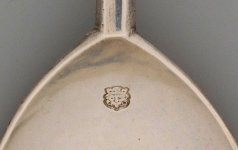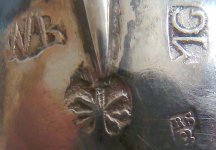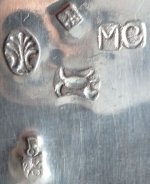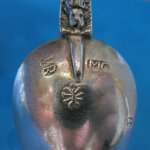silverdollarbill
Hero Member
- Aug 27, 2012
- 898
- 907
- Detector(s) used
- Tesoro Outlaw
- Primary Interest:
- All Treasure Hunting
I acquired a lot of decorative silver spoons. About half I have been able to identify the marks (most are from late 1800s & early 1900s), but about half of them have a ton of marks that I've never seen.
Let me know if you recognize any of the marks. Here are three of the spoons:

1st spoon - There are English marks (LL, Sterling Lion, London Mark, F import mark, & 1891 date mark) on the side of the one below, but what are the other marks.


2nd Spoon:


3rd Spoon:


Let me know if you recognize any of the marks. Here are three of the spoons:
1st spoon - There are English marks (LL, Sterling Lion, London Mark, F import mark, & 1891 date mark) on the side of the one below, but what are the other marks.
2nd Spoon:
3rd Spoon:







